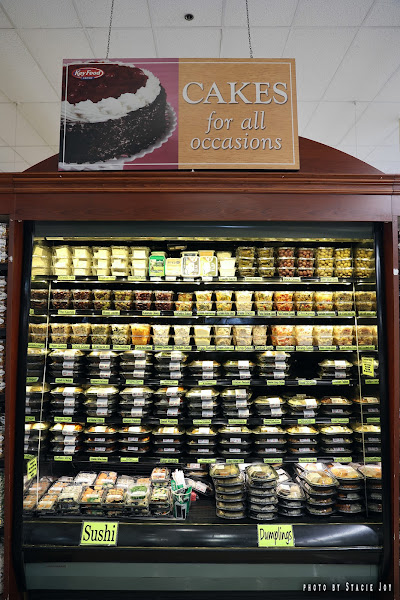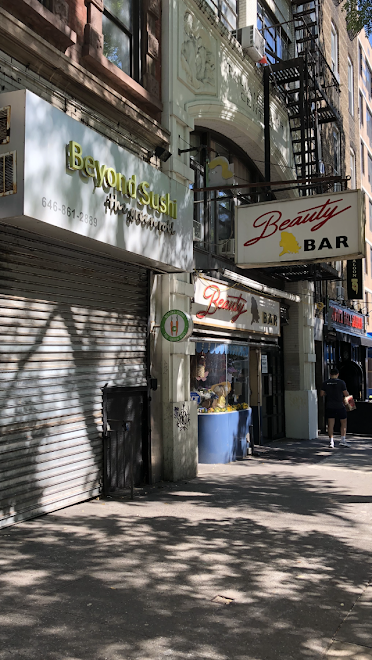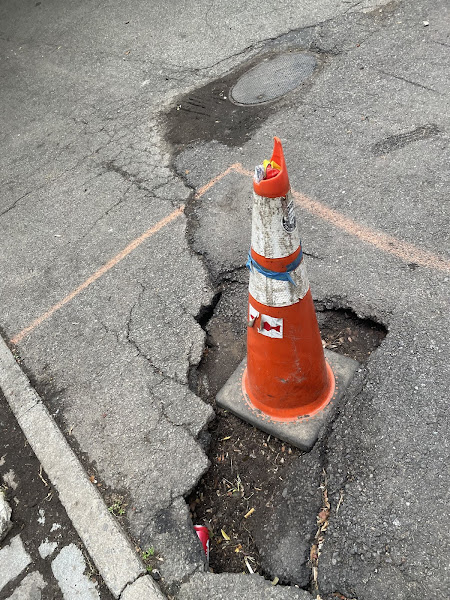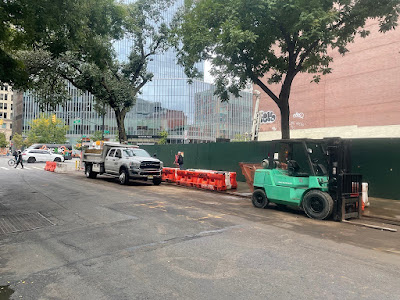Text and photos by Stacie Joy
Genshinkan Aikido is a well-hidden gem.
I’ve walked by 62 E. Fourth St. (between Second Avenue and the Bowery) a million times but had no idea what was hiding up several steep flights of steps — an airy, light, immaculate and well-appointed martial arts studio.
I recently stopped by to observe the practice. Dojo-Cho/chief instructor Gary Wagener (above left), sensei, currently holding a Yondan rank, or 4th-degree black belt, meets me at the door as he finishes preparing for class. I am given a mat and cushion. I offer assurances that I won’t be in the way, and I am left to experience the class without distraction.
Things begin with a period of meditation, followed by some instruction and a brief talk before the students pair off for what looked like choreographed moves. However, teacher and assistant Dojo-Cho Ariana Koblitz (above right) assures me it’s a self-defense technique.
Between water breaks (the dojo has fans circulating, but soon everyone is sweaty on this muggy evening), I hear the sound of bodies slamming on mats, Japanese call and response prompts, the soft voices of the instructors issuing corrections, adjustments, instructions and encouragement. And a few gentle jokes.
There are lots of rituals. I am especially keyed into the sound rituals involved in this practice: bells ringing, wooden clapper blocks (known as taku, and handmade in white oak by a student) clacking — a very loud and effective attention grabber, and breathwork, heard best during the silent meditation.
After the class winds down, I speak with Gary to learn more about the space, the Japanese martial art of Aikido, and its place in the community.
What type of martial arts do you teach?
Our school is devoted to the transmission and preservation of the traditional Japanese martial art of Aikido, a defensive art that redirects the energy of an attacker. Aikido focuses on compassion to resolve the physical conflict and offers a path devoted to personal, physical, and spiritual growth.
Students learn to peacefully resolve actual attacks through techniques involving throws, joint locks, strikes, and strategies for unbalancing opponents. We also train with traditional Japanese wooden weapons — the sword (bokken), staff (jo), and knife (tanto). These weapons are a fundamental component of our training and students discover, over time, how these weapons directly connect to the hand-to-hand techniques.
Beyond the practice itself — and just as important — at the heart of our school is a genuine community of amazingly good people. They’re shockingly nice. And, to be honest, the student base is not what I expected when we first opened the school. The goal was simply to open a traditional martial arts school and give students a place to train and train and train. It quickly evolved into something much more than the simple study of a budō (the martial way, or way of war).
These like-minded students of all backgrounds found kinship amongst each other. They found a place where they belonged and began to bond through the training, and the harmonious principles of the training. They continue to learn that our art is easily applied beyond the dojo and truly enriches their daily lives.
Your website mentions that there are no tournaments or trophies and that the practice itself is noncompetitive. How does this Aikido practice differ from other martial arts?
There are other noncompetitive martial arts, including Kenjutsu, Ninjutsu, Iaidō, certain styles of Kung Fu, and others. For the majority of students, the noncompetitive aspect of Aikido is an important one. Students seeking a place to learn self-defense without the anxieties that they can experience in a competition-based environment tend to thrive in this setting.
This allows students to learn freely from each other during a class. Eliminating competition gives the focus on the whole rather than the individual. Students want to help each other along their path through all levels of training. It’s really quite wonderful...this art was created to improve daily life through principles/concepts of compassion and harmony.
Who is a typical student if such a thing exists? Is this practice accessible to beginners? And what would you tell people who may be intimidated by this type of discipline?
Diversity is at the core of our school. Students range widely in age and vocation. Doctors, architects, cooks, computer engineers, actors, musicians, financial analysts, designers, dancers, law enforcement officers (who patrol our very own East Village streets), school teachers, and plenty more. We even have a student who’s in VFX [visual effects]! We’ve had classes where there have been more than 15 different countries represented. The diversity is a gift.
No matter the reasons a student begins their practice, you find this sweet and sincerely genuine group of people from all walks of life seeking a common goal of...peace. Peace not only for themselves but also for those around them.
The only thing that should intimidate a beginner visiting our school is the 5-story walkup. It’s natural to be intimidated or nervous when exploring something foreign and unknown, especially with a martial art. People may not want to hear this, but I get nervous walking into the dojo sometimes. Approaching the practice with a beginner’s mind gives you this sense of the unexpected.
Rest assured, any visitor will be welcomed to the dojo with nothing but a sincere and warm greeting. And they’ll experience much of that same warmth during a class. All of our classes are open to all levels and we focus on safety and taking classes slow to begin. The focus is on basic body movements and positioning, concepts, and form when a student starts. We want students to feel safe and welcome.
You and Ariana spoke about redirecting an attacker’s energy and resolving conflicts harmoniously. Can you elaborate on this?
“To injure an opponent is to injure yourself. To control aggression without inflicting injury is the Art of Peace.” — Morihei Ueshiba, Ōsensei
This mantra is at the foundation of our daily training. Understand, we are a true budō. And the physical application of Aikido can be quite powerful through joint locks and throws. But we’re not fighting. That’s never our purpose. There’s a stigma that martial arts are all about kicking and punching, and more recently, grappling (MMA, or mixed martial arts) fighting. We are not a fight club.
Our goal is conflict resolution...resolution that comes about through redirecting the energy a defender is receiving. Through partnered classes, we practice understanding how to guide an attack with a variety of defenses.
Why choose the East Village for your studio?
The EV is an ideal spot for countless reasons. Mainly, it’s a vibrant community surrounded by art. A neighborhood that’s essentially a living art in many ways. And that’s exactly what Aikido is, a living art. Kinetic, evolving, constantly changing, a motion of beauty.
I see the streets of the EV the same way. The neighborhood is clearly changing and has been since its inception — and always will. New buildings, restaurants, residents, graffiti, galleries, theaters, trees, the list of how the neighborhood continues in motion is infinite.
And finding the beauty in that change is a challenge sometimes, but it’s mostly there if we want to see it. Similar to how a strike can be redirected into a moment of harmonious connected rhythm. Does that make sense? I hope so!
You can keep up with the dojo on
Instagram.

















































